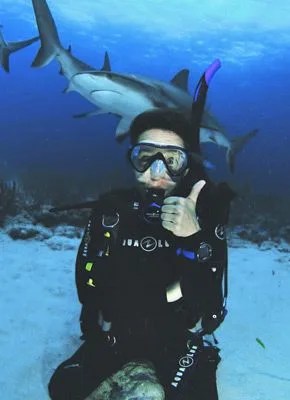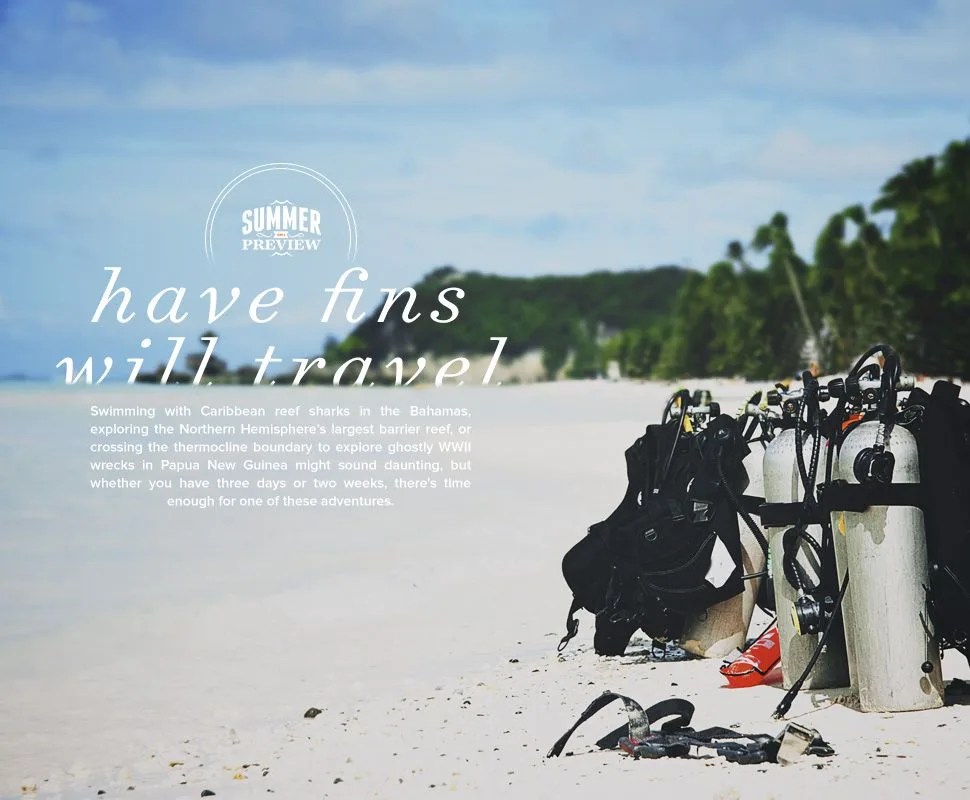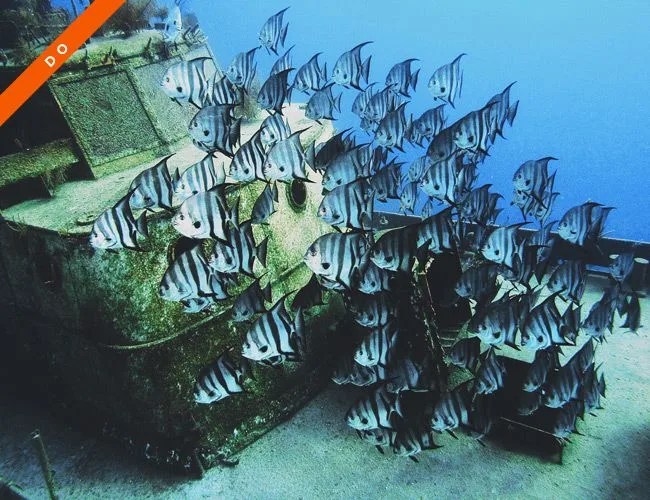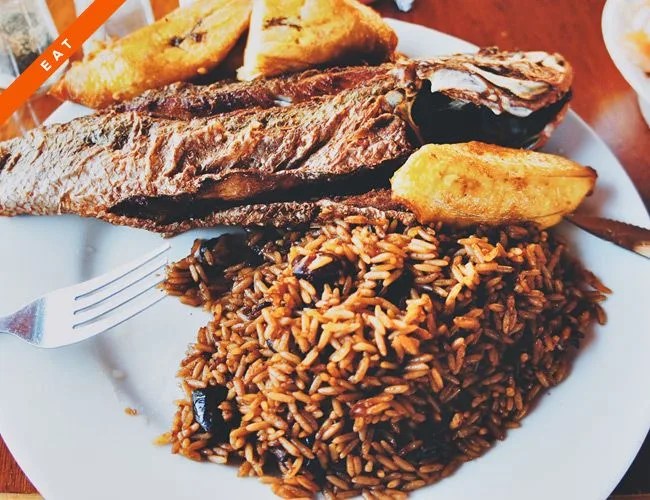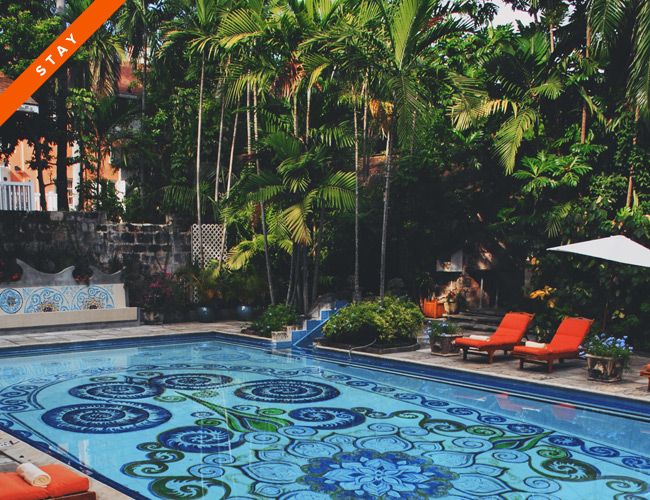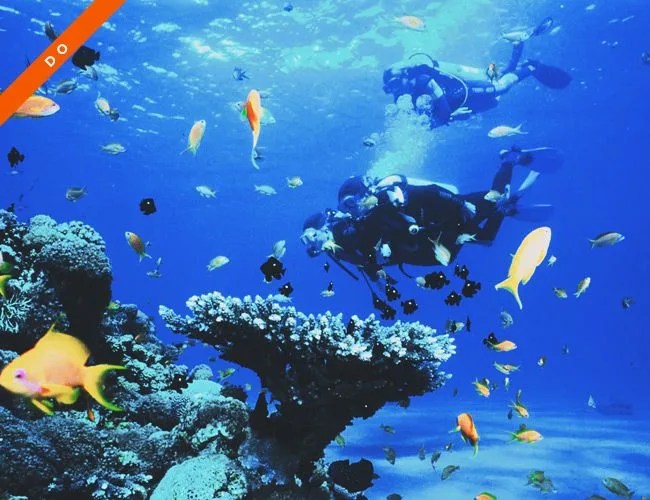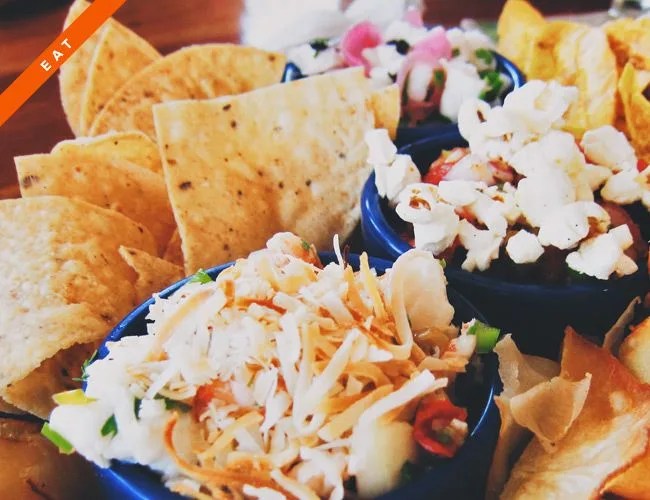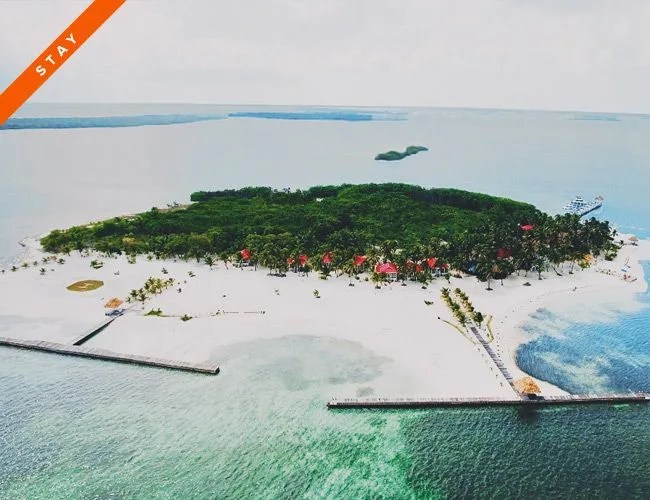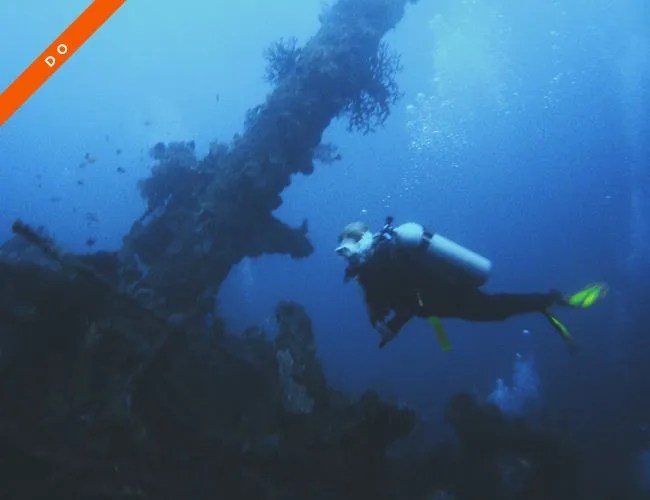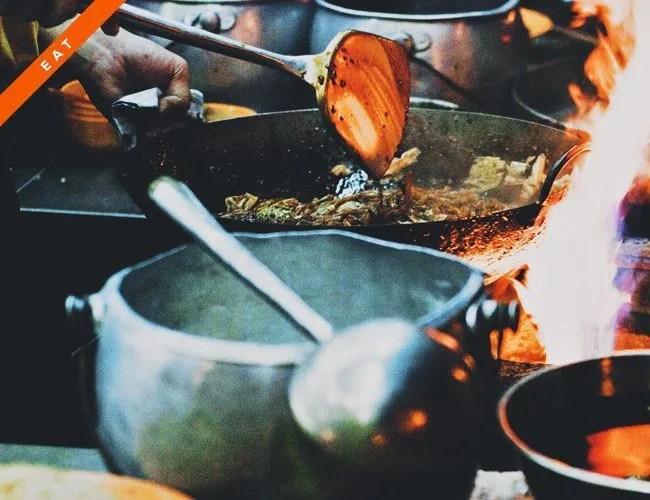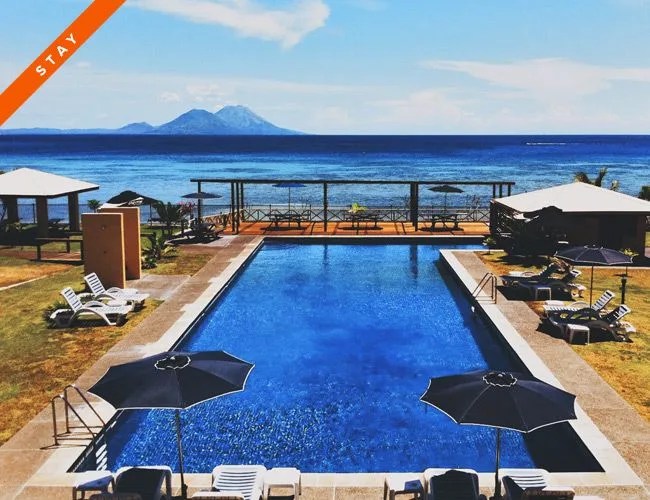I’m nervous about what’s to come: sharks. The bait box appears and, with it, so do two dozen Caribbean reef sharks. They jostle past me to reach the rotten fish. It’s both beautiful and alarming. Their tails glance off my shoulders. I remain stationary, neither a food source nor fleeing prey. Soon the fear subsides. I feel invisible. Smaller fish trail the sharks, catching rides on their wakes. Then the feeding ends as it began. The sharks dart away in every direction, and I’m left in crystal clear water, smiling.
The 50-foot descent to The Arena — the dive operation’s nickname for the human-placed, semi-circle of rocks — passes solitary sharks, grouper and the occasional green moray eel. Grab a seat, tuck your arms in, and watch for your chainmail-clad guide to approach with the bait box full of frozen, rotten fish. Within seconds, the blood draws more than a dozen seven-foot-long Caribbean reef sharks that swarm the arena. It’s a surreal, wide-eyed experience, the sharks swimming around divers and bumping into heads and arms as they line up for their favorite food. Don’t flee: as with any predator, sudden, rapid movement is a bad idea.
This show shouldn’t leave you guilt ridden: a 2010 scientific study found that, despite Bahamian dive operators’ long-term provisioning of the Caribbean reef shark population, there were no indications of a shift in shark behavior. That means even enviro-minded adrenaline junkies can enjoy the rush with a clear conscience.
OPERATOR: Stuart Cove’s Dive Bahamas is a full-service operator with seven dive vessels, a crew of quick-witted guides and a seemingly endless repertoire of colorful stories about Hollywood shark films, stunt doubling, and celebrity encounters. Open since 1978, the shop is tucked into the southwest side of New Providence Island, a welcome respite from New Providence’s bustling downtown and hotel strips. stuartcove.com
EAT: Head to the Fish Fry’s, a cluster of pastel-colored shacks in Arawak Cay, to feast on authentic Bahamian fare from greasy conch fritters to baked bonefish and dance to reggae music. Order a fresh conch salad and Sky Juice, a local favorite that combines coconut water, gin, and sweet cream for a tropical buzz. twinbrothersbahamas.com
STAY: Travelers looking for an intimate, old-world Bahamian experience should head to the Graycliff Hotel in the heart of downtown Nassau. The former 18th century private estate has played host to Sir Winston Churchill and the Beatles. Follow suit and request the Pool Cottage. Beginning at $350 for a deluxe room. graycliff.com

